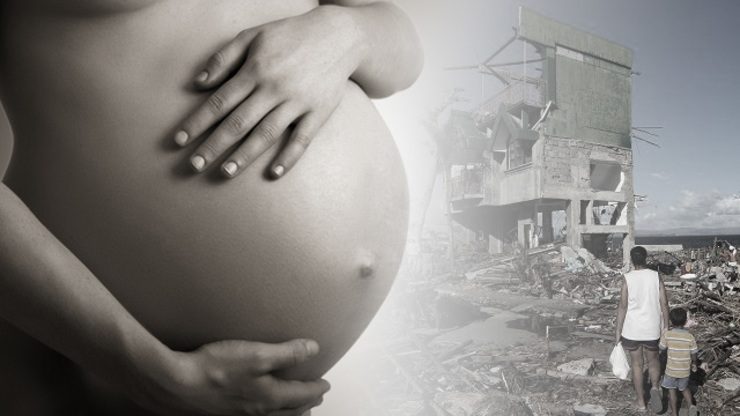SUMMARY
This is AI generated summarization, which may have errors. For context, always refer to the full article.

MANILA, Philippines – While the World Health Organization (WHO) has yet to get exact figures, preliminary reports from midwives in Yolanda-hit areas indicate there are “noticeably more teenagers that are pregnant” after the super typhoon left much damage in the Visayas in November 2013.
WHO Representative in the Philippines Julie Hall said this on Wednesday, October 29, during the press briefing on the public health situation one year after Super Typhoon Yolanda (international name: Haiyan).
The UN agency admitted that providing maternal and newborn health care remains a challenge, and the Philippines’ health department is “keeping a close eye” on the issue.
“We think, over the next few months, there will be increased demands on the maternal health services, and particularly for teenage pregnancy,” Hall noted.
Newborn care
Since the typhoon hit, over 15,000 babies are born in Yolanda-affected areas every month. The post-disaster “baby boom” is expected, but Hall admitted there are probably not enough incubators for newborn babies.
“That remains an issue when it comes to newborn care, and if we are to see more teenagers give birth, they tend to have smaller babies and premature babies, so it is certainly an issue looking at newborn care,” she added.
Hall said WHO is supporting the Department of Health in training health workers with the essential intrapartum and newborn care, newborn resuscitation to get babies’ breathing going, and kangaroo mother care so mothers can act as natural incubators.
A lot of support also came in for reproductive health and breastfeeding, which Hall said can help reduce infant mortality.
“Neonatal mortality, or newborn death rates, [is] something that is a bit of a challenge across the whole country. We’ve seen over the last 10 years a decline in numbers of children dying before the age of one, but the numbers of newborns within the first month of life dying has remained fairly flatlines,” she added.
According to WHO figures, about 40,000 newborns die every year in the Philippines.
Hall urged the Philippines to pay this issue extra attention in 2015 if it wants to be on track with Millennium Development Goal 4, or reducing child mortality in the country. – Rappler.com
Pregnant woman image from Shutterstock
See related stories:
- Yolanda a year after: Few LGUs asking for multi-hazard maps
- Yolanda a year after: Only 2% of needed houses to be built by Nov 8
- Yolanda a year after: Tacloban ‘township’ to rise
- Yolanda a year after: Hundreds of clinics not yet repaired
- Yolanda a year after: No major disease outbreaks recorded
- Finally, Aquino approves Yolanda rehabilitation plan
- Yolanda a year after: Many still suffer grief, depression
Add a comment
How does this make you feel?
![[In This Economy] A counter-rejoinder in the economic charter change debate](https://www.rappler.com/tachyon/2024/04/TL-counter-rejoinder-apr-20-2024.jpg?resize=257%2C257&crop=267px%2C0px%2C720px%2C720px)
![[Vantage Point] Joey Salceda says 8% GDP growth attainable](https://www.rappler.com/tachyon/2024/04/tl-salceda-gdp-growth-04192024.jpg?resize=257%2C257&crop_strategy=attention)
![[ANALYSIS] A new advocacy in race to financial literacy](https://www.rappler.com/tachyon/2024/04/advocacy-race-financial-literacy-April-19-2024.jpg?resize=257%2C257&crop_strategy=attention)


There are no comments yet. Add your comment to start the conversation.